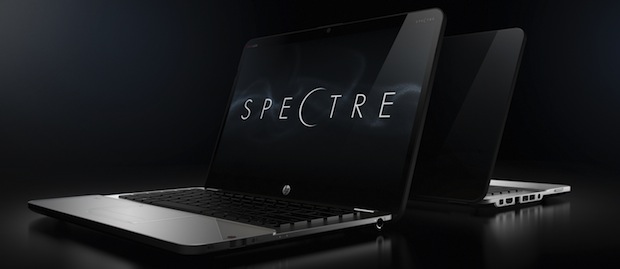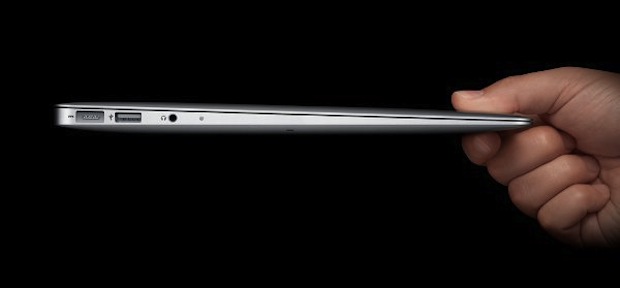
Intel is in the news thanks to CES, its new Ultrabook, and an incredibly ambitious--not to mention pricey--marketing push. But the real news isn't the ad campaign for Ultrabooks. A more interesting consideration is why Intel feels the need to do this at all.
Reuters is dubbing Intel's efforts a "marketing barrage" and notes that when it begins in April, it's "expected to surpass" its 2003 efforts to promote Centrino technology for wireless tech in laptops. "Intel spent about $300 million on that campaign," Reuters reports, meaning that Intel is seemingly about to spend somewhere around a third of a billion dollars to promote a novel new design for portable computers.
We contacted Intel's team, busy promoting the Ultrabook on the show floor at CES, and Media Relations Manager Robert Manetta told us that the company is "really excited about the reception that Ultrabook devices are receiving. The category is less than seven months old, the devices themselves have only been on the market for four months, and Intel has spent almost nothing in marketing. Still, the press are writing positive reviews and saying things like Ultrabook devices "'are one of the defining trends' of this year’s CES."
The push for this category of device is "just the beginning" of a "a multi-year, industry-wide effort that will roll out in phases and where new experiences and features will be added to Ultrabook devices over time," Manetta said, with the driving force coming from Windows 8 and new processors. In terms of marketing, Manetta pointed out that Intel spends "millions of dollars of marketing each year. This year we are focusing much of those resources on the Ultrabook category and that’s as it should be--the Ultrabook category is big priority for Intel."
There's much debate about it, but it's arguable that Apple created the Ultrabook reference design (for portable computers--not just your classic "PC") with the original Air in 2008, so we may quibble with Manetta's assertion the category is less than a year old. Plus the Ultrabook is not a new paradigm--a wholly new and innovative take on solving old and future problems--it's just a sleek and clever refinement of the tried and tested notebook PC design. This is true, no matter how much Intel tries to spin it as "a new era in computing" (the campaign's tagline). Reuters also mentioned this novel nugget: The campaign is "hoping to fend off major strides made by Apple Inc and its MacBook Air into the high-end personal computing market."
Before we go much further, here're a couple of thinking points: In 2011 the PC market remained more or less stagnant, and no particularly exciting sales growth occurred, which led to a dip in Microsoft's income--and mirrored in CPU sales, of course. Apple bucked the overall market trend, largely propelled by its MacBook Air line, and actualy grew both its sales and its market share with a record quarter. And Apple's entire iconic line of Mac computers is powered by Intel chips, after a dramatic move from IBM chips in 2006.

The reasons for Intel's Ultrabook moves actually begin not with the MacBook Air, but with the iPhone, a radical departure from the mainstream of smartphone designs before it and one so successful it's created several whole new markets and ways for consumers to compute on the go. The iPhone, and its followers powered by Google, RIM, Microsoft, and Nokia, don't use portable chips made by Intel. That's because Intel was caught on the hop, and hasn't been able to achieve the same low energy consumption/high relative computing power output of rival mobile CPU designers like ARM. Then there's the iPad, which has extended the iPhone halo and created an entirely new market for mobile slate PCs ... that again have zero to do with Intel's silicon: The ever-swelling rank of Android tablets with Amazon's successful Fire at the fore, and Windows-tablets powered by ARM chips on the horizon.
These devices have sold by the tens of millions. There's a rumored much more powerful iPad 3 on the way, which is set to challenge the "consume only" assumption about the iPad's usefulness, and perhaps erode traditional PC markets still more. There are even whispers Apple may abandon Intel CPUs altogether and pop its own-brand ARM-based CPU in its desktop machines. Some rumors suggest Apple's already trying this, and the tech benefits of multi-threaded computing and low power consumption would speak for themselves. Such a move would hurt Intel's bottom line.
So this explains the Ultrabook push: It's a massive, expensive, hedging manuever to create sales of Intel-powered PCs borrowed from Apple's Air innovation--designed to protect Intel's market for traditional PC CPUs in the short-to-medium term. And perhaps protect it for even longer if industry can be persuaded to buy Ultrabooks for executives on the move, or tele-present workers, thanks to those nice revenue-generating five-year upgrade plans.
With great timeliness, Intel's also finally signed a multi-year deal with Motorola to put Intel CPUs, starting with the new Atom "Medfield" processor, in smartphones and tablets. The first will be an Android phone, influenced no doubt by Google's acquisition of Motorola Mobility, and it'll arrive in the latter half of this year (five and half years after the iPhone arrived, but still--a positive move).
Also at CES Intel may have stolen a march on its former partner Microsoft by demonstrating an innovative ultrabook design dubbed Nikiski that has a transparent touchpad that allows a kind of pseudo tablet-style interaction. It's attracted a lot of positive attention, and is being seen as a hint that a slew of hybrid devices may be on the way soon--something we've previously thought likely.
Chat about this article with Kit Eaton (with two ARMS and no Intel Inside) on Twitter and an excitingly tech-forward Fast Company too.